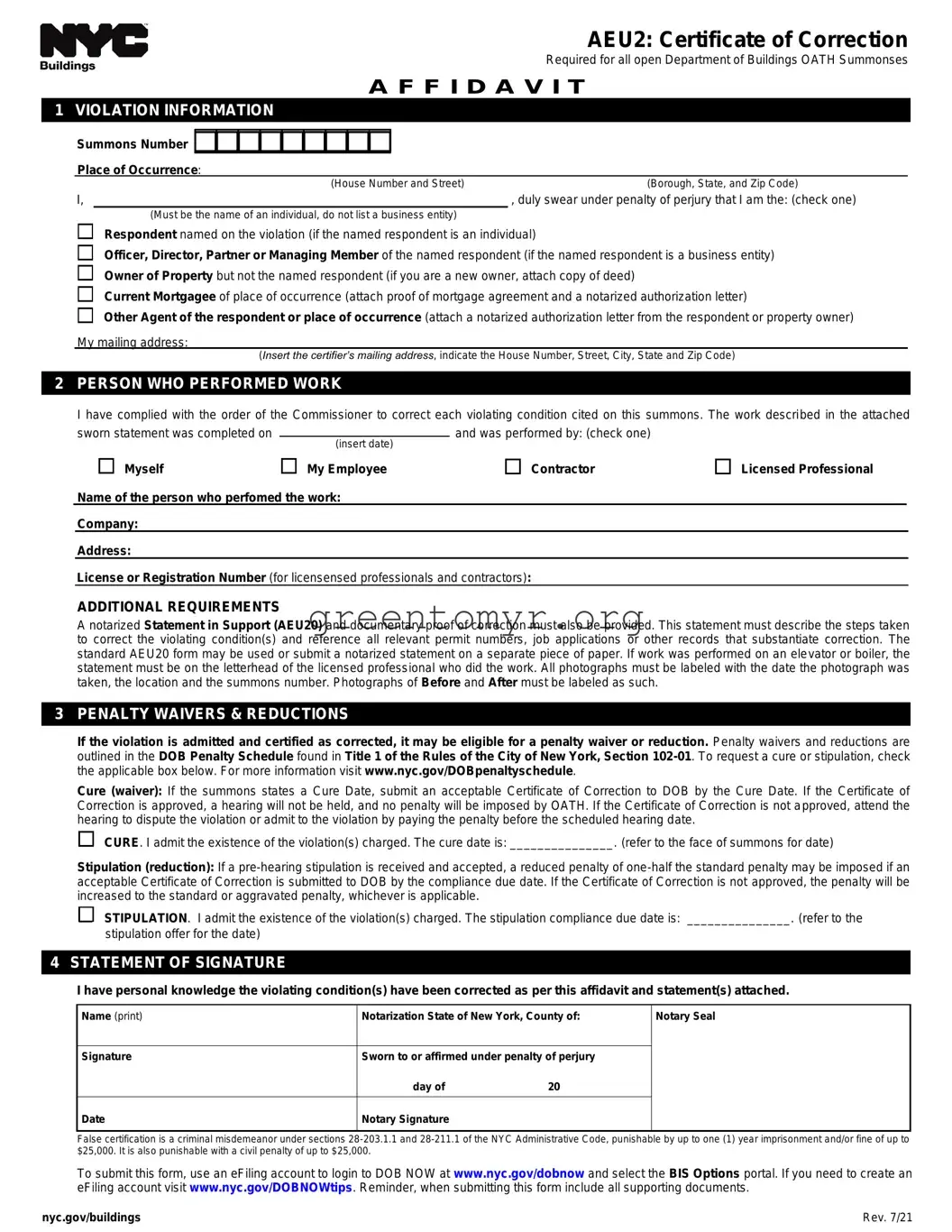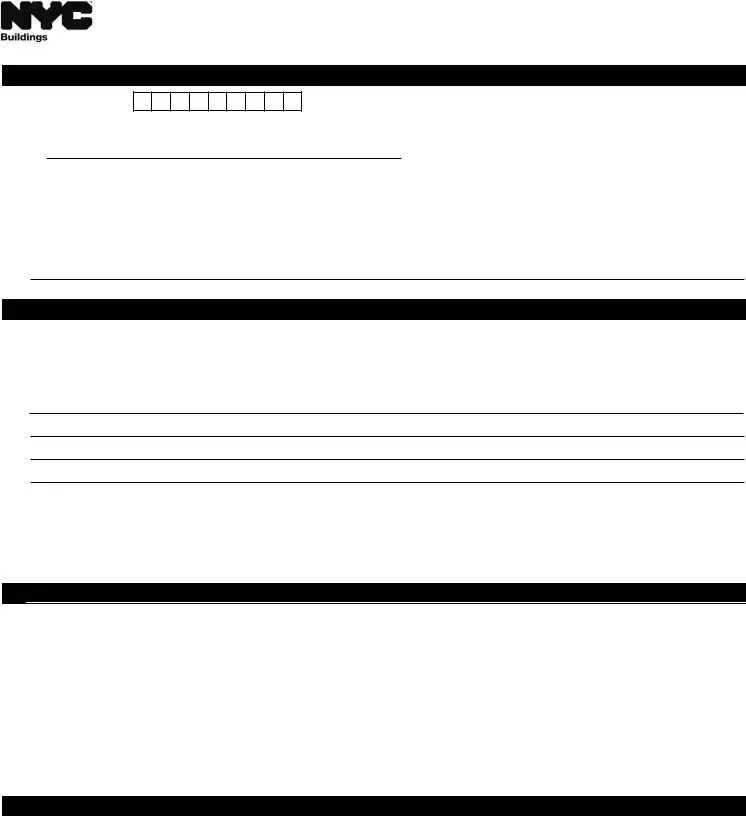My mailing address:
(Insert the certifier’s mailing address, indicate the House Number, Street, City, State and Zip Code)
2 PERSON WHO PERFORMED WORK
I have complied with the order of the Commissioner to correct each violating condition cited on this summons. The work described in the attached
sworn statement was completed on |
|
and was performed by: (check one) |
|
(insert date) |
|
|
|
|
Myself |
My Employee |
Contractor |
Licensed Professional |
Name of the person who perfomed the work:
Company:
Address:
License or Registration Number (for licensensed professionals and contractors):
ADDITIONAL REQUIREMENTS
A notarized Statement in Support (AEU20) and documentary proof of correction must also be provided. This statement must describe the steps taken to correct the violating condition(s) and reference all relevant permit numbers, job applications or other records that substantiate correction. The standard AEU20 form may be used or submit a notarized statement on a separate piece of paper. If work was performed on an elevator or boiler, the statement must be on the letterhead of the licensed professional who did the work. All photographs must be labeled with the date the photograph was taken, the location and the summons number. Photographs of Before and After must be labeled as such.
3 PENALTY WAIVERS & REDUCTIONS
If the violation is admitted and certified as corrected, it may be eligible for a penalty waiver or reduction. Penalty waivers and reductions are outlined in the DOB Penalty Schedule found in Title 1 of the Rules of the City of New York, Section 102-01. To request a cure or stipulation, check the applicable box below. For more information visit www.nyc.gov/DOBpenaltyschedule.
Cure (waiver): If the summons states a Cure Date, submit an acceptable Certificate of Correction to DOB by the Cure Date. If the Certificate of Correction is approved, a hearing will not be held, and no penalty will be imposed by OATH. If the Certificate of Correction is not approved, attend the hearing to dispute the violation or admit to the violation by paying the penalty before the scheduled hearing date.
CURE. I admit the existence of the violation(s) charged. The cure date is: _______________. (refer to the face of summons for date)
Stipulation (reduction): If a pre-hearing stipulation is received and accepted, a reduced penalty of one-half the standard penalty may be imposed if an acceptable Certificate of Correction is submitted to DOB by the compliance due date. If the Certificate of Correction is not approved, the penalty will be increased to the standard or aggravated penalty, whichever is applicable.
STIPULATION. I admit the existence of the violation(s) charged. The stipulation compliance due date is: _______________. (refer to the stipulation offer for the date)
4 STATEMENT OF SIGNATURE
I have personal knowledge the violating condition(s) have been corrected as per this affidavit and statement(s) attached.
Name (print) |
Notarization State of New York, County of: |
Notary Seal |
|
|
|
Signature |
Sworn to or affirmed under penalty of perjury |
|
|
day of |
20 |
|
|
|
|
|
Date |
Notary Signature |
|
|
|
|
|
|
False certification is a criminal misdemeanor under sections 28-203.1.1 and 28-211.1 of the NYC Administrative Code, punishable by up to one (1) year imprisonment and/or fine of up to $25,000. It is also punishable with a civil penalty of up to $25,000.
To submit this form, use an eFiling account to login to DOB NOW at www.nyc.gov/dobnow and select the BIS Options portal. If you need to create an eFiling account visit www.nyc.gov/DOBNOWtips. Reminder, when submitting this form include all supporting documents.
nyc.gov/buildings |
Rev. 7/21 |

